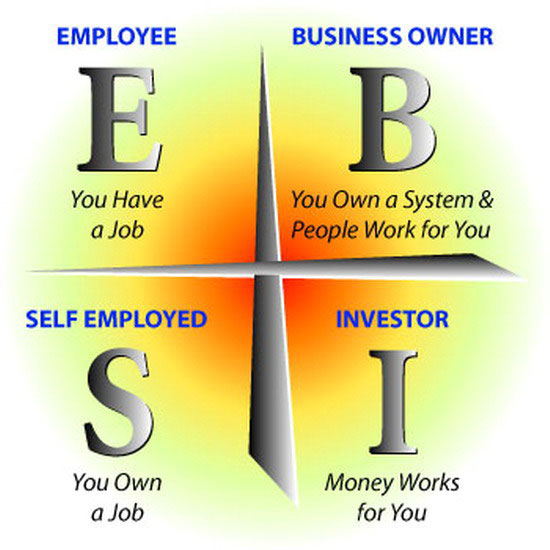Robert Kiyosaki is the author of Rich Dad, Poor Dad, and his CASHFLOW Quadrant has shaped my way of thinking about how to make money. As shown in the image below, he describes four ways to make money: Employee, Self Employed, Business Owner, and Investor. He argues that those on the left side of the quadrant can never build true wealth in part because they are trading a finite resource, their time, for money.

I wrote a series of posts a while ago about freelancing, which is in the Self Employed quadrant. Compared to being a traditional employee, freelancing can have advantages like accelerated career development, increased income, diversification, and autonomy.
However, freelancing is still trading time for money. The benefits of freelancing are amplified for those who successfully transition to Business Owner on the right side of the quadrant. As a business owner you can multiply your income without increasing the amount of time you spend earning it.
Here are 3 ways to transition from freelancer to business owner:
1. Dedicate a portion of your time to work for yourself
Hire yourself as one of your freelance clients, and give yourself the responsibility of building a business.
I recently heard Gary Vaynerchuck give the following the advice (paraphrased): live on as little as possible and spend the rest of your money investing in yourself.
This is a variation on that theme. Trade the minimal amount of time for the money you need to live on, and then spend the rest of your time building your business until it can replace your freelancing income.
At first your time might be spent on figuring out what kind of business to build. As you begin building a business, you might need to do a little more freelancing to finance the business.
Grow slowly. Don’t take on debt to grow your business! This works for some people, but debt creates risk and kills many of the advantages of being a business owner. Instead of additional freedom and income, you will become a slave to your business, your creditors, and interest payments.
2. Look for ways to automate your expertise
When Dave Ramsey began his mission to educate the world about personal finance, he did one-on-one financial counseling. It didn’t take him long to realize that he couldn’t build a successful business this way. Growth was limited to the amount of time he had for clients, and the very people who needed help the most weren’t able to pay enough to make the business viable.
Instead, he wrote a book to automate his expertise. The only limit to the number of people he could help is how many were willing to spend $10-20 on his book. He started a radio show where he could share his expertise with many listeners at the same time. He wrote more books and developed training courses. Now he is the multimillionaire owner of a 450-employee business that helps millions of people around the world.
Many freelancing skills can be automated in a similar way. Freelance writers can write books or syndicated columns. Freelance programmers can write online software that people are willing to pay a subscription to use.
3. Hire people to leverage your time
A freelancer working alone must do everything from high-value client presentations to low-value expense report preparation. Freelancers can leverage their time by hiring help for lower-value tasks. The booming virtual assistant industry makes this cheaper and easier than ever before.
Some of the companies I work with don’t have enough transaction volume to justify hiring a bookkeeper, but they also don’t want to pay me to do bookkeeping. Instead, I turned to Elance. I found an accounting firm based in India that charges $6-8/hour, depending on the task. They handle all data entry and month-end procedures. I simply spend a minimal amount of time reviewing the financials for accuracy, and then I’m free to perform high-value tasks such as presenting to the management team insights gleaned from the financials.
It helps to look at everything you spend your time on and ask if there’s someone else than can do this almost as good as me for much cheaper. If you are paid $75/hr as a freelancer, why not spend $5-20/hr for virtual assistants to take tasks off your plate? Good candidates include travel arrangements, preparing expense reports, gathering content for social media posts, doing market research, preparing PowerPoint presentations, etc.
As you grow, you can even hire good people for the high-value tasks. As the business owner, you can earn money while you sleep or vacation.
Conclusion
Moving from Employee to a Self Employed freelancer is a step in the right direction. However, I encourage you to see if you can use these 3 methods to make the leap to Business Owner on the right side of the CASHFLOW Quadrant. Then you can enjoy the benefits of multiplying your income without multiplying the time you spend working.
Question: What are other ways to move from freelancer to business owner?
